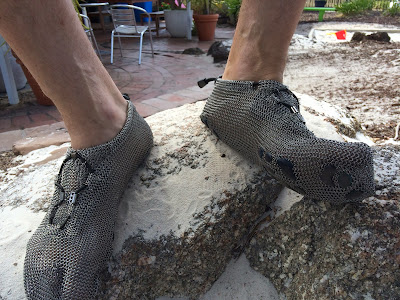The principle is amazingly simple: a silicone tube, flanged and sliced at one end, that fits over your screwdriver head, and lightly grips the head of the screws you are wanting to put into place.
The tool-end of the tube has a X shaped internal structure to enable it to fit around different thicknesses of drivers, and there are two different sized of Screw Grabber, to accommodate both larger and smaller tools, of 2.5mm-4mm (3/32"-5/32") and 4mm-7mm (5/32"-1/4") sized drivers, regardless of head-type; Phillips, flathead, Torx or hex.

The screw-end of the Grabber features three cuts, and internal ridges to grip the head of the screw, and due to the slide-on nature of the Grabber, you can adjust the depth of field by slipping it higher or shallower on the driver.
Both sizes worked admirably on most of the drivers I tested on, although my smallest of screwdrivers was too skinny to be gripped by the thinner of the two. The larger Grabber worked nicely on my larger drivers, even the flatheads.
Of the prototypes, the clear samples were durometer rated as a Shore 37A, and the blue samples at a Shore of 50. The ScrewGrabber team tell me the finished product will have a higher rating, so it will be interesting to see.
 That hardness rating comes into play when both grabbing, holding and driving screws, and I found that the extra stiffness offered by the blue versions did improve the application of these, but made for less impressive photos that the translucent versions.
That hardness rating comes into play when both grabbing, holding and driving screws, and I found that the extra stiffness offered by the blue versions did improve the application of these, but made for less impressive photos that the translucent versions.  You can see that the slits open up as you drive the screws, making it relatively easy to finish the job without needed to swap over, remove the Grabber or any other additional manipulation. I also tried to use the Grabber to remove screws I had undone, but with less success. No big deal really. I was able to collect a screw from a tub of screws though, that was a bonus.
You can see that the slits open up as you drive the screws, making it relatively easy to finish the job without needed to swap over, remove the Grabber or any other additional manipulation. I also tried to use the Grabber to remove screws I had undone, but with less success. No big deal really. I was able to collect a screw from a tub of screws though, that was a bonus. Not having to fumble with screws whilst doing a rapid assembly; shoring up a doorframe, adding additional locks, barricades or the like, saves time and effort.
Not dropping valuable components whilst doing constructions, repairs or the like is another excellent reason to not be loosing your screws. Remember, not all screws are ferromagnetic, so simply having a magnetic tool-tip is not the perfect solution. Especially pertinent for maritime builders, or non-sparking requirements.
These were a simple little addition, and I think I'll be leaving them on my favorite drivers, slipped out of the way, ready to use, no matter what comes.






















